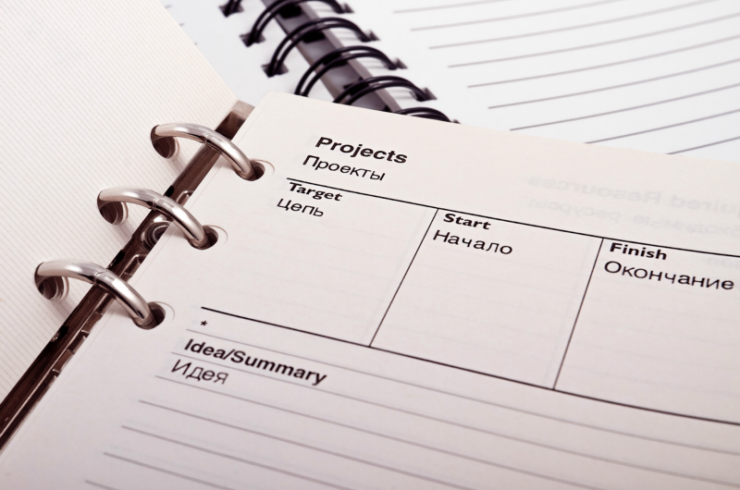Making a project functional is no easy task. Projects are long and complicated, with numerous tasks to complete and countless strict deadlines to adhere to.
Imagine you start a project. How do you know the process to ensure a successful project? How do you know exactly what the project entails? How do you know what is required to make the project a success?
Imagine you’re a programme manager in charge of multiple projects — the tasks becomes 10 times harder!
These questions can be answered through the usage of business requirements, and more specifically — a business requirements document (BRD).
These can help make a project more functional by providing key information about what the project should achieve, and how it should be achieved.
In this article, we will discuss what business requirements are in further detail, the benefits of using a business requirements document, and delve further into how the usage of business requirements can make a project more functional.
Let’s get started!
What are Business Requirements?
In order to answer the question of what business requirements are, we must first understand the definition of a requirement. A requirement can be defined as a singular characteristic or capability that is mandatory for a system, product, or service to possess.
In order to define a business requirement — let’s take it one little step further. Business requirements are those specific requirements that are mandatory for a business system, product, or service to possess in order to be effective.
These sort of requirements can be further divided into two categories: functional and non-functional requirements.
Functional requirements are those specific features or behaviours that a system must have in order to carry out its required tasks. For example, a functional requirement for an e-commerce website could be the ability to add items to a shopping cart.
Non-functional requirements are those specific characteristics or capabilities that are not related to the functionality of the system, but are still necessary for it to be effective.
The equivalent non-functional requirement for the e-commerce website could be the need for the website to be secure.

What is a Business Requirements Document?
A business requirements document (BRD) is a document that contains all of the necessary information about what a project should achieve, and how it should be achieved.
This information is gathered through interviews, observations, and research with individuals who are knowledgeable about the project. It is similar to a project management plan, but with some key differences.
A high-quality BRD should contain both functional and non-functional requirements, as well as any additional information that may be required in order for the project to be completed successfully.
This additional information can include things such as project timelines, budget restrictions, and risks that have been identified.
This may seem like a lot for one piece of work, but a BRD is intended to be an all-encompassing document that you and your team can refer to for guidance.
Business Requirements Document Template
Now that we’ve gone through some definitions, let’s go through a template you and your firm can follow when looking to write up your own business requirements document.
Although business requirement documents can vary in length and complexity depending on the project, there are some key elements that should always be included. Let’s brush over these so you have a rough idea as to what each element covers.
- Executive summary: this should provide a brief overview of the project and its key goals.
- List of stakeholders: this is important so that everyone knows who is responsible for what and can contact the relevant person if they have any questions.
- List of business requirements for the project: this should be as detailed as possible to ensure that everyone understands what needs to be done.
- Project timeline: this should outline when each task needs to be completed by and who is responsible for it.
- List of risks and issues: this is important so that everyone is aware of any potential problems that could arise during the project and can plan accordingly.
Example of a Business Requirements Document
To get a better understanding of what a business requirements document may look like in practice, let’s take a more detailed look at an example. The following is an excerpt from a BRD for the development of a new (theoretical) software application:
The purpose of this project is to develop a new software application that will be used by the sales team to track customer orders. The application must be able to do the following:
- Allow users to create new customer profiles
- Allow users to input customer orders
- Allow users to view and update existing customer orders
- Generate reports on customer orders
This excerpt contains both functional and non-functional requirements.
The functional requirements are the specific features or behaviours that the new software application must have in order to carry out its required tasks.
The non-functional requirement in this excerpt is the need for the application to generate reports on customer orders.

Benefits of Using a Business Requirements Document
Let’s take a deeper dive into the top 5 benefits of using a business requirements document:
1. Helps to Ensure that all Stakeholders are on the Same Page
When working on a project, it is important that all stakeholders are aware of what is required in order for the project to be successful.
By having a business requirements document, you can ensure that everyone involved in the project understands the goals and objectives, as well as the expectations.
This can lead to the avoidance of any misunderstandings or miscommunications that could cause problems further down the line.
2. Provides a Clear Overview of the Project
The business requirements document should provide a clear and concise overview of the project. It should contain all of the essential information that is required for the project to be completed successfully.
This can help to ensure that everyone involved in the project understands what needs to be done, and how it should be done.
3. Helps to Identify any Potential Risks
One of the benefits of having a business requirements document is that it can help to identify any potential risks that may be associated with the project.
By identifying these risks early on, you can then take steps to mitigate them, or even avoid them altogether. This reduces the chances of problems further along the project lifecycle.
4. Facilitates Better Decision Making
Another benefit of using a business requirements document is that it can facilitate better decision making.
This is because all of the essential information about the project will be gathered in one place. This can then be used to make informed decisions about how best to proceed with the project.
5. Makes Changes Easier to Manage
As projects often have strict deadlines, it is important that any changes that need to be made are managed effectively.
A business requirements document can help with this by providing a clear overview of what has been changed, and why it has been changed. This can then be used as a reference point if there are any questions or queries about the changes that have been made.

How do Real-life Companies use Business Requirements Effectively?
Many companies use business requirements to aid their projects functionality, but how do they actually use them? Let’s take a look at a few examples.
One company that uses business requirements is Google. They have a dedicated team of Business Analysts who are responsible for creating and maintaining their BRDs.
This team works closely with other teams within Google, such as product managers and engineers, to make sure that everyone is on the same page and that the project stays on track.
Another company that makes use of business requirements is Amazon. They have a similar process to Google, where they also have a dedicated team of Business Analysts who are responsible for BRDs.
Facebook also uses business requirements. They have a different approach, however, as they do not have a dedicated team of Business Analysts. Instead, they have what is known as a “Product Requirements Document” (PRD).
This document is created by the product managers and outlines the requirements for the product. The engineers then use this document to build the product.

Final Thoughts
Business requirements are a crucial part of any project. They can help to ensure that all stakeholders are on the same page, provide a clear roadmap for the project, and improve communication between all parties involved.
Many companies use business requirements, such as Google, Amazon, and Facebook. Each company has their own process for using business requirements, but they all share the same goal: to make the project more functional.
In conclusion, business requirements are a vital part of any project. They can help to ensure that the project is more functional by providing key information about what needs to be done and how it should be done.
A well-written business requirements document can make all the difference in the success of a project. When you’re looking to begin a new project, make sure that business requirements — and therefore a business requirements document — are close to the top of your to-do list!
